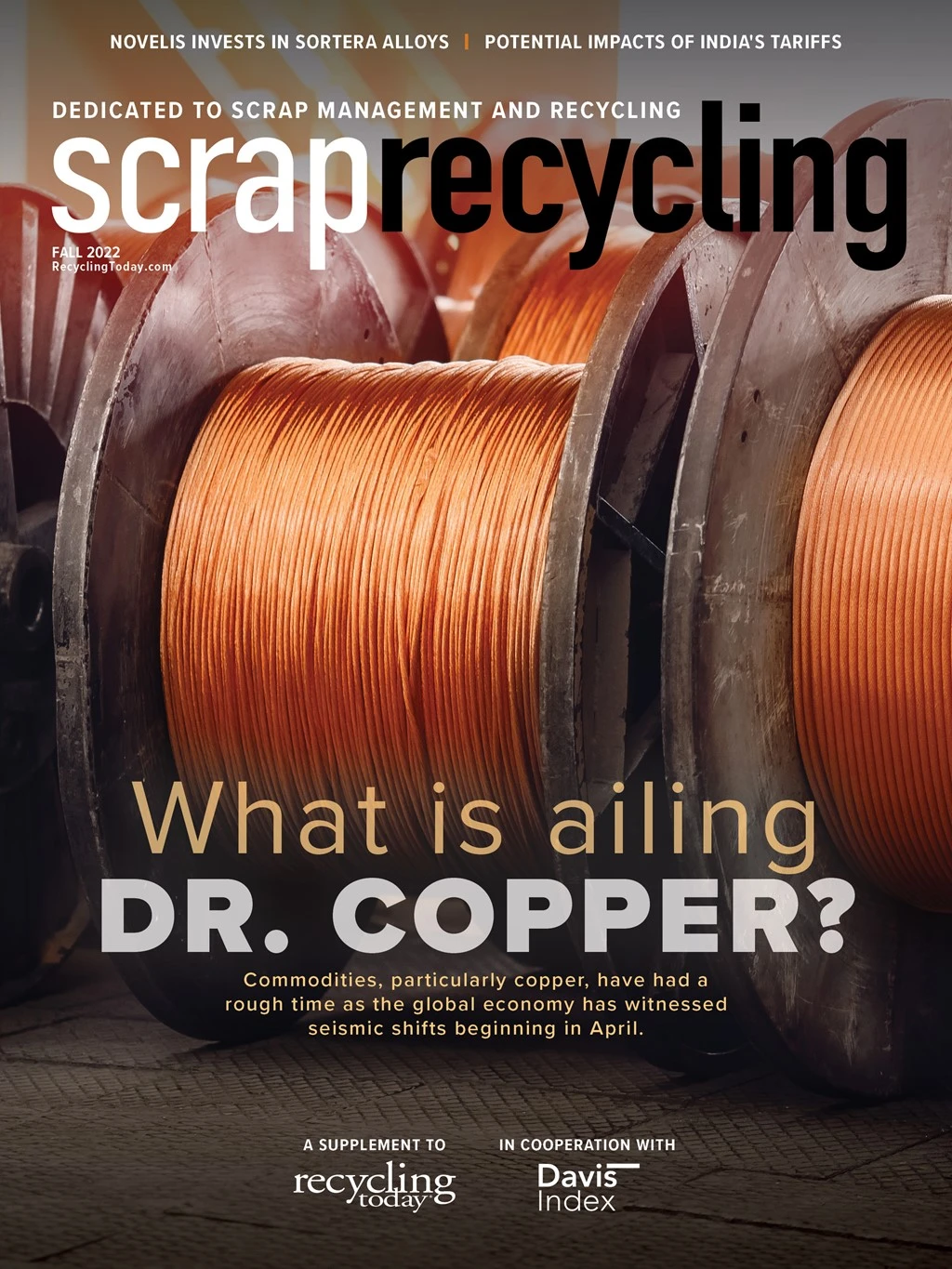

The Indian government announced May 22 an export tax of 15 percent on finished steel and 45 percent on pellets, among other steel products, up from zero percent previously. On iron ore, the export duty was raised from 30 percent on lumps (with more than 58 percent ferrous content) to 50 percent for all grades of the material.
As the government sought to alleviate the pressure on the Indian steel industry amid rising global inflation, it also reduced taxes on imports of certain raw materials, including coking coal and ferronickel. The move was aimed at increasing the availability of raw material for the domestic steelmaking industry to shield it against supply chain disruptions, which were exacerbated by Russia’s invasion of Ukraine.
Once these tariffs were introduced, an immediate frenzy dragged down steel prices in the Indian market. In the 10 days starting May 19, the Davis Index for secondary rebar declined by 3,200 rupees ($40) per metric ton to 55,600 rupees ($700) per metric ton ex-works Mumbai June 1. Meanwhile, June 30, hot-rolled coil (HRC) prices were around 74,930 rupees ($943) per metric ton, and cold-rolled coil (CRC) at 80,830 rupees ($1,018) per metric ton, down by 6 percent and 8.2 percent, respectively, from the start of the month, according to the Indian Steel Ministry’s data.
Jindal Steel and Power, in its report for the first quarter of its 2023 fiscal year (April-June 2022), mentions export prices for Indian HRC had declined by 40 percent from their peak in April by the end of the quarter. In these three months, domestic HRC and rebar prices followed export prices, declining by 20 percent to 25 percent.
Vicky Mathur, who heads the international trade for Indian mill Radha TMT in the state of Telangana, says the immediate repercussions of the move were painful for many mills as they were forced to absorb the added costs.
He adds that large-scale mills have a better capacity to cushion such financial blows. Steelmakers in the micro, small and medium enterprises sector, however, have taken a harder hit. In the medium term, mills have continued to focus on domestic markets. The glut added downward pressure on steel prices but at the cost of low foreign currency reserves and the depreciation of the Indian currency to 79.91 rupees against $1 on July 23 from 77.59 rupees to $1 on May 31.

Outlook weakens
Rating agency ICRA Ltd., New Delhi, downgraded the outlook for the Indian steel sector to stable from positive after the announcement. The agency suggests that though the demand growth forecast is unchanged at 7 percent to 8 percent from the previous estimate, operating profits for steelmakers could be 30 percent lower.
Steel producers in the country also could face headwinds from weak macroeconomic parameters, including inflation, which was higher than expected. Elevated input costs and lower steel prices could lead to a margin squeeze for producers.
Steelmakers have started reporting a decrease in sales. Mumbai-based JSW Steel Ltd.’s standalone sales of salable steel, including long and flat-rolled products in Q1 of its 2023 fiscal year, stood at 4.03 million metric tons, down by 21 percent from the preceding quarter, according to its quarterly results. Meanwhile, Jindal’s sales declined by 16.34 percent from the fourth quarter of its 2022 fiscal year to 1.74 million metric tons.
Both steelmakers reported an annual rise in sales as the first quarter of fiscal 2022 was affected by a COVID-19-induced slowdown. However, on a sequential basis, the duty announced in May proved to be a dampener, with both steelmakers highlighting the 15 percent export duty as one of the major reasons for a decline in sales.
A drop in exports

In June, India witnessed a decline in its steel exports. Finished steel sales in overseas markets stood at 638,000 metric tons for the month, down by 19.4 percent from May. For the quarter ending in June, exports decreased by 38.4 percent to 2.19 million metric tons from the prior-year quarter, according to the Indian Ministry of Steel. Market participants note that since the imposition of the duty, steel exports make up less than 15 percent of production, a level set by the national steel policy.
Although semifinished steel products, such as billets, managed to remain out of the list, their sales in the export market were unviable. In late May and early June, offers for the product by Russian sellers were $50 to $70 per metric ton lower than their Indian counterparts. Mills in Russia kept their asking prices competitive as they sought to clear pent-up inventories arising from sanctions imposed by European countries.
The 45 percent export tax on iron ore pellets, one of the most exported Indian steel commodities, also makes its overseas sales impractical at current prices. India exported more than 11 million metric tons, or about 15 percent, of its total pellets production in fiscal year 2022, which ran from April 2021 through March 2022.
Steel sales in overseas markets will continue to fall, with Mumbai-based CRISIL Ltd. predicting a decline ranging from 35 percent to 40 percent to 10 million to 12 million metric tons in fiscal year 2023, which runs from April 2022 through March 2023.
A resulting supply overhang could continue to drag down prices in the domestic market, shrink industry asset utilization and cut profits, market participants say. As mills try to adjust their output, ICRA estimates a 10 percent, or 1.1 million metric tons, fall in India’s pellet production in FY2023.
A unified cry for reversals
The Federation of Indian Chambers of Commerce & Industry states these duties are likely to affect new investment in steel capacities. The body also had asked for a three-month deferment to allow mills to clear export orders that were in the pipeline. At the time of the announcement, a finished steel volume to the tune of 2 million metric tons was pending to be sold in overseas markets, with either established letters of credit or signed sales contracts. The Mumbai-based Federation of Indian Chambers of Commerce & Industry points out that the imposition of duties could have affected these deals.
A delegation of steelmakers also reached out to India’s steel ministry seeking an allowance to clear these preorders, which the government subsequently approved.
Although the government granted temporary relief, mills have continued to appeal for a permanent reversal of these duties. There has been no confirmation from the ministry, but some steelmakers say they are hopeful the government will revoke the duties once prices cool further. Mathur of TMT says that amid a similar price peak in 2008, the export duty announced by the then-Congress was reversed in 30 days.

Explore the Fall 2022 Scrap Recycling Issue
Check out more from this issue and find your next story to read.
Latest from Recycling Today
- BMW Group, Encory launch 'direct recycling’ of batteries
- Loom Carbon, RTI International partner to scale textile recycling technology
- Goodwill Industries of West Michigan, American Glass Mosaics partner to divert glass from landfill
- CARI forms federal advocacy partnership
- Monthly packaging papers shipments down in November
- STEEL Act aims to enhance trade enforcement to prevent dumping of steel in the US
- San Francisco schools introduce compostable lunch trays
- Aduro graduates from Shell GameChanger program





